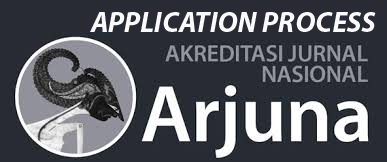Pelatihan Deteksi Risiko Hipertensi Dengan Analisis Data Riwayat Medis Berbasis Random Forest Untuk Tenaga Kesehatan Masyarakat
DOI:
https://doi.org/10.62027/sevaka.v1i4.527Keywords:
Hypertension, Random Forest, Machine Learning, Medical History, Public HealthAbstract
Hypertension is one of the most prevalent non-communicable diseases and a major risk factor for heart disease, stroke, and kidney disorders. The high prevalence of hypertension cases in the community, particularly in the working area of Puskesmas Kota Rantau Prapat, highlights the urgent need for more effective early detection efforts to prevent severe complications in the future. However, the limited capacity of healthcare workers in utilizing data analysis technologies has resulted in hypertension risk detection being dominated by conventional methods, which are often less accurate and inefficient. To address this issue, this community service program was conducted through training on the application of the Random Forest algorithm to analyze patients’ medical history data in order to detect hypertension risks. The training method included an introduction to the fundamentals of machine learning, data pre-processing stages, implementation of the Random Forest algorithm, and interpretation of prediction results. The outcomes of the program demonstrated that healthcare workers were able to understand the use of data analysis technologies to support more accurate early detection of hypertension. Furthermore, the participants gained practical skills in utilizing medical datasets to produce predictions that can serve as a decision-support tool for preventive medical actions.Thus, this training contributed to enhancing the capacity of community healthcare workers in integrating machine learning-based technologies into preventive healthcare services. This program is expected to serve as an initial step toward developing more effective, efficient, and sustainable data-driven health systems.
References
World Health Organization, “Hypertension fact sheet,” WHO, 2021. [Online]. Available: https://www.who.int/news-room/fact-sheets/detail/hypertension.
M. Forouzanfar, et al., “Global burden of hypertension and systolic blood pressure of at least 110 to 115 mm Hg, 1990–2015,” JAMA, vol. 317, no. 2, pp. 165–182, 2017.
Kementerian Kesehatan RI, “Laporan Riset Kesehatan Dasar (Riskesdas) 2018,” Badan Penelitian dan Pengembangan Kesehatan, Jakarta, 2019.
D. N. Prasetyo, “Tantangan layanan primer dalam pengendalian hipertensi di Indonesia,” Media Kesehatan Masyarakat Indonesia, vol. 20, no. 3, pp. 213–220, 2021.
L. Breiman, “Random Forests,” Machine Learning, vol. 45, no. 1, pp. 5–32, 2001.
G. Biau and E. Scornet, “A random forest guided tour,” TEST, vol. 25, no. 2, pp. 197–227, 2016.
A. Fernández, et al., “Learning from imbalanced data sets,” Pattern Recognition, vol. 67, pp. 1–26, 2017.
H. Ahn, et al., “Predicting hypertension using machine learning: A cross-sectional study in Korea,” Healthcare Informatics Research, vol. 26, no. 3, pp. 176–185, 2020.
Y. Li, et al., “Machine learning models for predicting hypertension based on electronic health records,” BMC Medical Informatics and Decision Making, vol. 19, no. 1, pp. 1–10, 2019.
P. Kumar, et al., “Application of random forest algorithm in predicting hypertension using lifestyle and clinical data in India,” Journal of Healthcare Engineering, vol. 2020, Article ID 1234567, 2020.
J. Chen, et al., “Application of machine learning for hypertension risk prediction: A Chinese community-based study,” Scientific Reports, vol. 11, no. 1, pp. 1–10, 2021.
A. Santoso and R. Wibowo, “Implementasi machine learning untuk prediksi penyakit tidak menular di Puskesmas,” Jurnal Teknologi Kesehatan, vol. 19, no. 4, pp. 251–259, 2022.
S. M. Lundberg, et al., “Explainable machine-learning predictions for the prevention of hypoxaemia during surgery,” Nature Biomedical Engineering, vol. 2, pp. 749–760, 2018.
N. Sharma and V. K. Jain, “Comparative study of machine learning models for hypertension prediction,” Procedia Computer Science, vol. 167, pp. 1751–1760, 2020.
E. T. Wahyuni, “Keterbatasan infrastruktur dalam penerapan analisis data kesehatan di layanan primer,” Jurnal Sistem Informasi Kesehatan, vol. 10, no. 2, pp. 87–95, 2021.
M. H. Mirbabaie, et al., “Privacy and ethical concerns in healthcare data analytics: A machine learning perspective,” Journal of Medical Systems, vol. 45, no. 12, pp. 1–12, 2021.
K. Nugraha, “Capacity building tenaga kesehatan melalui pelatihan berbasis teknologi,” Jurnal Pengabdian Kesehatan Masyarakat, vol. 4, no. 1, pp. 45–54, 2022.
J. F. Sargent, et al., “Training community health workers in data-driven approaches for hypertension management,” Global Health Action, vol. 13, no. 1, pp. 1–9, 2020.
D. S. Putri and M. R. Hakim, “Simulasi dashboard interaktif untuk prediksi penyakit tidak menular di layanan primer,” Jurnal Ilmu Komputer dan Kesehatan, vol. 7, no. 2, pp. 115–124, 2022.
Ministry of Health Republic of Indonesia, “Strategi Nasional Penanggulangan Penyakit Tidak Menular 2020–2024,” Jakarta: Kementerian Kesehatan RI, 2020.
Downloads
Published
How to Cite
Issue
Section
License
Copyright (c) 2024 Sevaka : Hasil Kegiatan Layanan Masyarakat

This work is licensed under a Creative Commons Attribution-ShareAlike 4.0 International License.







